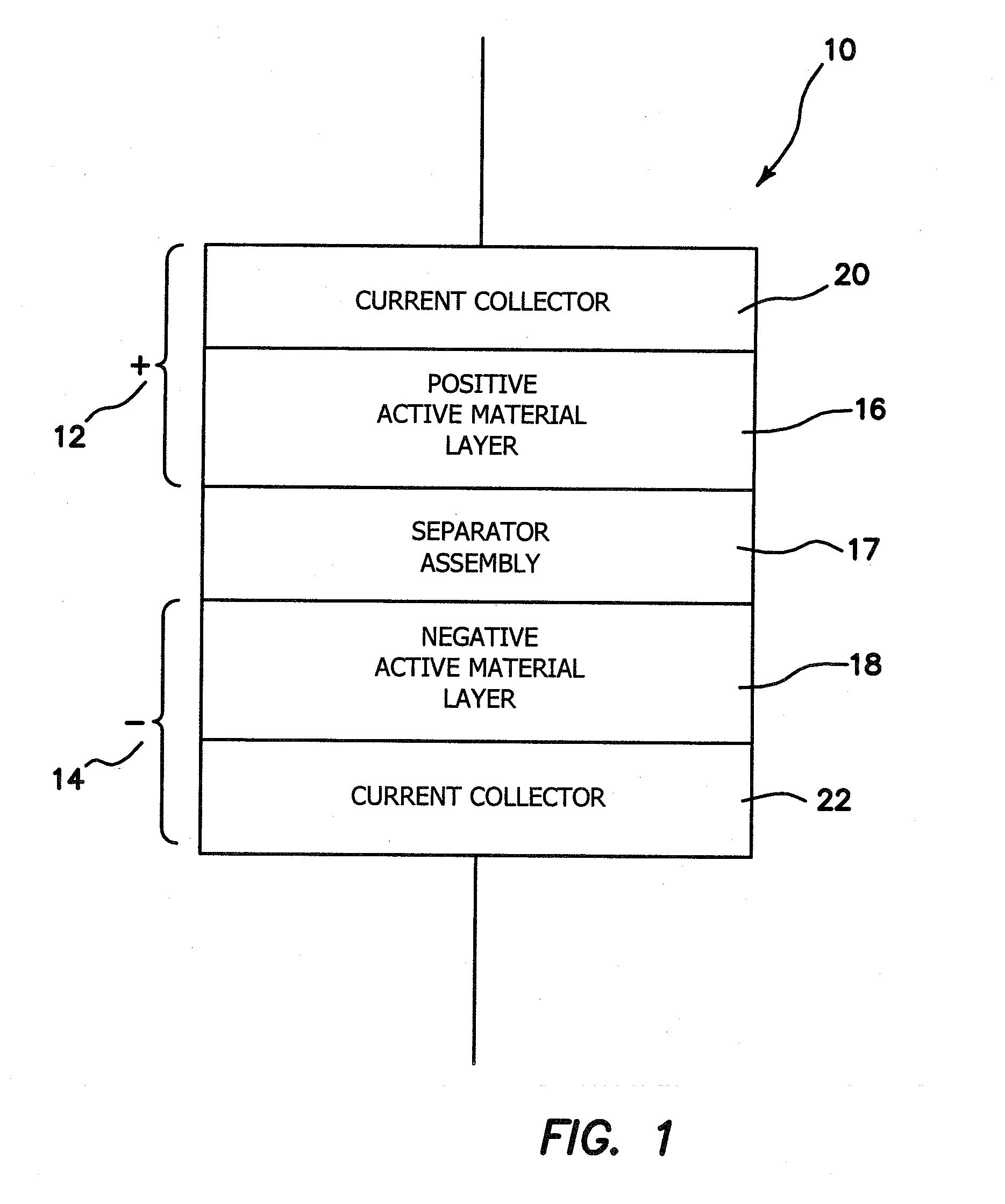Enhanced Electrolyte Percolation in Lithium Ion Batteries
a lithium ion battery and electrolyte percolation technology, applied in the field of lithium ion batteries, can solve the problems of limited control of electrolyte percolation, low void volume between particles, and reduced power performance, and achieve the effects of increasing the void porosity of active materials, increasing the ability to allow ion diffusion, and increasing the ability to transfer
- Summary
- Abstract
- Description
- Claims
- Application Information
AI Technical Summary
Benefits of technology
Problems solved by technology
Method used
Image
Examples
Embodiment Construction
[0033]Referring to FIG. 1, a lithium ion battery 10 is shown. Although only one battery cell, made up of two half-cells coupled together, is shown—for illustrative purposes—battery 10 may include 2, 3, 4 or more such cells, for example, in series or parallel.
[0034]By convention, the positive electrode 12 is referred to as the cathode, and the negative electrode 14 is referred to as the anode. A separator assembly 17 is positioned between the two electrodes 12 and 14. By definition, on discharge the anode 14 is undergoing oxidation and the cathode 12 is being reduced.
[0035]The positive active material is present in positive active material layer 16, and the negative active material is present in negative active material layer 18.
[0036]The first and second current collectors 20 and 22, as well as the separator assembly 17 may be of conventional structure and construction and may be made of conventional and well known materials suitable for the purpose intended.
[0037]The first or posit...
PUM
 Login to View More
Login to View More Abstract
Description
Claims
Application Information
 Login to View More
Login to View More - R&D
- Intellectual Property
- Life Sciences
- Materials
- Tech Scout
- Unparalleled Data Quality
- Higher Quality Content
- 60% Fewer Hallucinations
Browse by: Latest US Patents, China's latest patents, Technical Efficacy Thesaurus, Application Domain, Technology Topic, Popular Technical Reports.
© 2025 PatSnap. All rights reserved.Legal|Privacy policy|Modern Slavery Act Transparency Statement|Sitemap|About US| Contact US: help@patsnap.com



